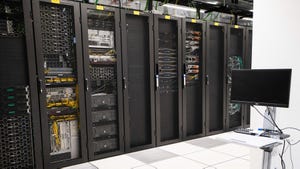
Insight and analysis on the data center space from industry thought leaders.
Roaring Into the Cloud: Malaysia’s Tech Tiger Leaps AheadRoaring Into the Cloud: Malaysia’s Tech Tiger Leaps Ahead
Driven by hyperscale investments and strong colocation demand, Malaysia is emerging as Asia’s next data center hub, writes Kelvin Fong, managing director at EdgeConneX.
July 30, 2024

With a population of 33 million, a sizeable GDP, and a burgeoning digital economy, Malaysia has emerged as a leading contender as the next data center hub in Asia. Driven by hyperscale investments and strong colocation demand, the Malaysian data center market is projected to grow at a fast compound annual growth rate (CAGR) of 7% to $1.6 billion by 2027 from $1.1 billion in 2021, according to data from Arizton Advisory and Intelligence.
The strong growth can be attributed to a confluence of factors such as increased interest in cloud services stemming from the growing adoption of cloud computing, government-backed initiatives to attract new investments in data centers, and the ongoing effects of the Singapore data center moratorium.
Within the country, other drivers include a digital shift in the form of a surge of internet users, which reached 96.8% of the population compared to 89.6% in 2020, while growth and digitalization of commercial sectors like BFSI, manufacturing, IT, and logistics are propelling data center infrastructure demand and contributing to Malaysia status as one of the region’s most dynamic data center markets.
Chart-Topping Data Center Growth
These developments didn’t take place in a vacuum. For years, Malaysia has strategically positioned itself as a data center destination and pushed for investments in digital infrastructure. For instance, the Malaysia Digital Economy Corporation (MDEC) has played an active role in implementing programs to attract foreign investments in the digital sector, including data centers.
Almost three decades ago, the Multimedia Super Corridor (MSC Malaysia) was established to accelerate the growth of the country's digital economy with a special economic zone designed to support the IT ecosystem and IT-enabled industries. The MSC extends from downtown Kuala Lumpur, the capital of Malaysia, all the way to Negeri Sembilan. Covering around 750 sq km in area, it includes the towns of Putrajaya and Cyberjaya, with the latter established to create a city focused on information technology.
Industry observers will point to two high-growth regions for data centers in Malaysia today: The Greater Kuala Lumpur which encompasses Central Kuala Lumpur and Cyberjaya, and the state of Johor located at the end of the Malay Peninsula. Cyberjaya has long been a primary data center location in the country due to its strong infrastructure and connectivity; new facilities are constantly built there and at Bukit Jalil further up which has a less constrained power grid.
Johor has substantial capacity under construction and more facilities in the pipeline. Though only a small proportion is currently in operation, it is estimated that Johor will see RM17 billion worth of new investment in data centers in 2024 alone. The rapid buildup is buoyed by its proximity to Singapore, which has a data center vacancy rate of just 2%, and where the availability of dark fiber connectivity across land links gives Malaysia an edge to service one of Asia Pacific’s largest consumers of data.
Renewables in the Pipeline
The rapid development of data centers in Malaysia would not be complete without highlighting Malaysia’s concerted push to develop its renewable resources. Data centers consume a prodigious amount of power to serve the ever-increasing demand for data storage and processing. As the global community becomes more environmentally conscious, the need for green energy sources becomes paramount for data center operators to reduce their carbon footprint and maintain a sustainable business model.
Malaysia has made rapid progress in transitioning from a heavily fossil fuel-dependent energy mix to a more sustainable one. In 2020, natural gas constituted the largest portion at 42.4% with crude oil and coal making up most of the rest – a mere 3.9% came from renewables. But by March 2023, Malaysia's percentage of renewables was 25%, according to the Malaysian Investment Development Authority.
This puts Malaysia on track to achieving the goals stated in the Malaysia Renewable Energy Roadmap (MyRER) in which the government aims for renewable energy to provide 31% (13 GW) of the nation’s energy needs by 2025, 40% (18 GW) by 2035, and 70% by 2050.
The Malaysian government has introduced several initiatives to promote renewable energy development and is moving ahead with multiple plans to harness renewable energy sources such as solar and hydroelectric. Ultimately, the availability of renewable energy is crucial to the data center industry and addresses concerns regarding sustainable power scalability, as well as meeting the demands of hyperscalers and colocation providers.
A Strategic Hub in Asia
Asia Pacific is set to become the world’s largest data center region over the next decade. As a region, Southeast Asia is experiencing rapid digitalization and seeing increasing demand for data centers. Malaysia, with its strategic location, digital infrastructure, and strong government support, is well-positioned to capitalize on this growth and establish itself as a key player in the data center market.
Kelvin Fong joined EdgeConneX in 2021 as Managing Director for the Asia-Pacific Region. Kelvin brings extensive experience in the data center industry, and specifically in data center development in Asia. His track record extends to 20 years of data center development, operations and management across the continent.
Read more about:
Asia-PacificAbout the Author
You May Also Like









